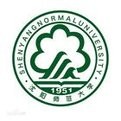分享到
DFT analysis on the removal of dimethylbenzoquinones in atmosphere and water environments: ·OH-initiated oxidation and captured by (TiO2)n clusters (n=1–6)
2020
期刊
Journal of Hazardous Materials
- 卷 386
- 页码 121636
- Elsevier BV
- ISSN: 0304-3894
- DOI: 10.1016/j.jhazmat.2019.121636



